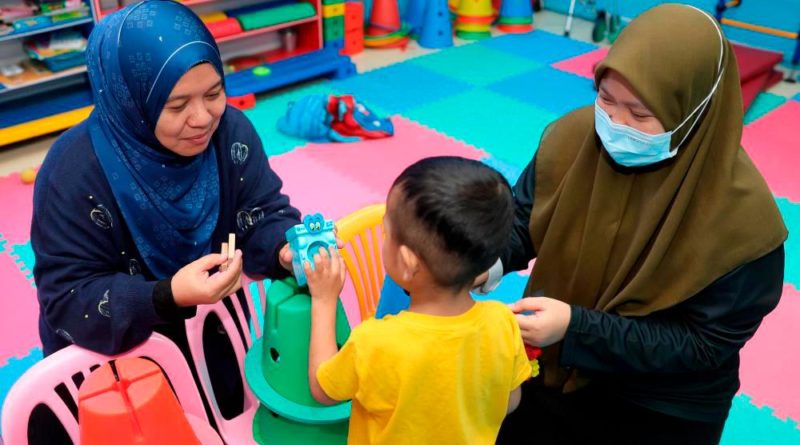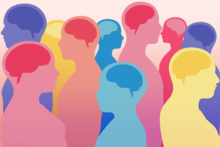OPINION-COLUMN | Harnessing unique talents of neurodivergent individuals

Universiti Malaya
IN our pursuit of a more equitable and diverse workforce to support future generations, we need to recognise and accommodate the unique talents of neurodivergent individuals. They consist of individuals with conditions such as autism spectrum disorder (ASD), attention deficit hyperactivity disorder (ADHD), dyslexia, dysgraphia, dyspraxia, dyscalculia and many other neurological differences.
According to worldpopulation review.com, Malaysia has around 325 individuals with ASD and 432 ADHD for every 100,000 population. These figures exclude other neurodivergent differences such as dyslexia.

Some of these individuals are adults and are currently employed. However, there will be a growing number of them that will be entering our workforce in the future. Therefore, to advocate diversity and inclusion in the workplace, we need robust policies that address the specific needs of neurodivergent employees.
The factors that should be covered under these policies are awareness and education, recruitment and hiring practices, workplace accommodations, support networks, career development and retention and leadership commitment.
Firstly, organisations should invest in education for non-divergent (neurotypical) employees and managers about neurodiversity. Understanding the strengths and challenges of neurodivergent individuals can create a supportive environment at the workplace, raising awareness and helping reduce the stigma while fostering empathy.
Next is having inclusive job descriptions that focus on the skills and competencies of neurodivergent employees rather than rigid qualifications. Alternative career pathways for this group may not fit our traditional criteria.
In recognising that neurodivergent individuals may thrive under different conditions or work situations, it will be beneficial to offer flexible work hours, remote work options and sensory-friendly spaces to enhance their productivity.
Communication channels may have to be straightforward and transparent, making them easier to understand. It will be helpful if these employees are offered tailored career pathways based on their strengths and interests.
Organisations should provide opportunities for these individuals to gain skill development and advancement. Protection and safety should also be included as one of the important criteria.
The policies should also cover the evaluation of performance that is holistic, including quantitative and qualitative contributions. Recognising the differences and acknowledging their contributions will add value to the organisation. This should include the commitment from the leadership team including top management, middle management, executives and peers.
By having these policies, we can support neurodivergent individuals and unlock their potential to drive innovation, creativity and other types of performance that can contribute to the organisational success.
Neurodiversity
The neurodiversity paradigm was developed and embraced first by autistic people,[66][67] but has been applied to other conditions such as attention deficit hyperactivity disorder (ADHD), developmental speech disorders, dyslexia, dysgraphia, dyspraxia,[68] dyscalculia, dysnomia, intellectual disability, Tourette syndrome,[69] and sometimes mental illnesses such as schizophrenia,[7][70] bipolar disorder,[71] schizoaffective disorder, and, somewhat more controversially, personality disorders such as antisocial personality disorder.[72] Neurodiversity advocates[which?] who support those with autism, ADHD, dyslexia, and other neurodevelopmental disorders do not agree in framing medical interventions as a way to “cure” or “fix” these individuals. Rather, they promote support systems such as inclusion-focused services, accommodations, communication and assistive technologies, occupational training, and independent living support.[40][73][74][75] The intention is for individuals to receive support that honors human diversity and feel that they are able to freely express themselves. Other forms of treatment may cause them to feel as though they are being coerced or forced to adapt to social norms, or to conform to a behavioral standard or clinical ideal.[76][77]
Proponents of neurodiversity strive to reconceptualize autism and related conditions in society by acknowledging that neurodiversity does not require a cure, changing the language from the current “condition, disease, disorder, or illness”-based nomenclature, “broadening the understanding of healthy or independent living”, acknowledging new types of autonomy, and giving neurodivergent individuals more control over their treatment, including the type, timing, and whether there should be treatment at all.[20][7]
Activists such as Jennifer White-Johnson have helped bring attention to the neurodiversity movement, by creating symbols of protest and recognition, including a combination of the black power fist and infinity symbol.[78]
A 2009 study[79] separated 27 students with conditions including autism, dyslexia, developmental coordination disorder, ADHD, and having suffered a stroke into two categories of self-view: “A ‘difference’ view—where neurodiversity was seen as a difference incorporating a set of strengths and weaknesses, or a ‘medical/deficit’ view—where neurodiversity was seen as a disadvantageous medical condition”. They found that, although all of the students reported uniformly difficult schooling careers involving exclusion, abuse, and bullying, those who viewed themselves from the “difference” view (41% of the study cohort) “indicated higher academic self-esteem and confidence in their abilities and many (73%) expressed considerable career ambitions with positive and clear goals”.[79] Many of these students reported gaining this view of themselves through contact with neurodiversity advocates in online support groups.[79]
A 2013 online survey which aimed to assess conceptions of autism and neurodiversity suggested that conception of autism as a difference, and not a deficit, is developmentally beneficial and “transcend[s] a false dichotomy between celebrating differences and ameliorating deficit”.[80]
Neurodiversity advocate John Elder Robison argues that the disabilities and strengths conferred by neurological differences may be mutually inseparable. “When 99 neurologically identical people fail to solve a problem, it’s often the 1% fellow who’s different who holds the key. Yet that person may be disabled or disadvantaged most or all of the time. To neurodiversity proponents, people are disabled because they are at the edges of the bell curve, not because they are sick or broken.”[81]
Neurodiversity and education
Diversity in the education system is not always observed from a neurodiverse perspective. There are several models that are used to understand disability. One is the medical model of disability that views people with disabilities as needing to be treated or cured.[82] Another is the social model of disability putting emphasis on the way that society treats people with disabilities.[82] The social model argues that people with disabilities experience more difficulties from society than the disability alone.[82]
Nachman and colleagues reviewed several articles published by 2-year community colleges and found some discrepancies in the way that they perceived and categorized “disabled” students and “non-disabled” students.[83] They found that all of the articles were attempting to normalize disability.[83] Many of them put distinct separation between typical and atypical learners as well as their potential academic achievement.[83] Nachman also found that many of the articles showed a lack of autonomy for neurodivergent students.[83] They had little power in regard to academic choices and classroom management.[83]
Another study explored minority stress through the lens of transgender and gender diverse students who were neurodivergent.[84] The researchers found that these students were likely to experience multiple forms of oppression rather than just one.[84] Some of those types include gender related oppression and oppression related to their neurodivergence.[84] The students who had a higher level of minority stress due to stigma awareness were expected to have lower academic performance and higher risk of psychological distress.[84]
Career preparation that is specifically targeted for neurodivergent students is lacking.[82] There are several programs that exist to help assist neurodivergent individuals in finding and obtaining a job but not many of those programs exist within schools.[82] This can make it difficult for neurodivergent students to find a career path that they feel is attainable for them.
Universities and educational institutions could constitute a place of fulfillment and development for neurodivergent people. According to an article published in 2023, universities and post-secondary establishments would show more tolerance towards neurodivergent people. Furthermore, this kind of environment gives rise to independence and autonomy and can thus lead to kindness and understanding. This is why implementing strategies based on the concept of compassion could be an asset for educational institutions and therefore mask this difference that exists between people.[85] Neurodivergent students in higher education also report a need for non-academic supports, such as social mentorships and resources for strength-based interventions in order to further assist neurodivergent students in the social aspects of college life.[86]
Neurodiversity and the workplace
Neurodivergent individuals are subjected to bias when applying and interviewing for job positions.[87] Specifically, neurodivergent individuals can have their social engagement style compared to neurotypical individuals, which can affect their ability to obtain a job position.[87] Stigmas against neurodivergence (especially against autistic individuals) and cognition challenges in social situations can hinder an individual’s ability to perform well in a traditional job interview.[88]
In a systematic review that considered developmental dyslexia as “an expression of neurodiversity”, it was suggested that neurodiversity is not yet an established concept in the workplace, and therefore, support from social relationships and work accommodations is minimal.[89] Furthermore, another systematic review that focused on pharmacological and combined pharmacological/psychosocial interventions for adults with attention deficit hyperactivity disorder found that there were few workplace-based intervention studies, and suggested that additional research needs to be conducted to figure out how to best support neurodivergent employees in the workplace.[90]
A study conducted during the COVID-19 pandemic suggested that neurodivergent individuals would benefit from remote work as it allowed them to engage in their interests, but that social engagement is still necessary for productivity and performance.[91] Another study supported these findings and stressed the need for redesigned work and social conditions to be more inclusive for individuals with autism.[92]
Controversy
The neurodiversity paradigm is controversial in autism advocacy.[66] The dominant paradigm, the medical model of disability holds that neurodivergent individuals have medical conditions which should be treated.[93]
A common criticism is that the neurodiversity paradigm is too widely encompassing and that its conception should exclude those whose functioning is more severely impaired.[66][94] In response, autistic advocate Nick Walker suggested that neurodiversity refers specifically to “pervasive neurocognitive differences […] intimately related to the formation and constitution of the self”, in contrast to medical conditions such as epilepsy.[7][undue weight? ]
The increase of representation of the neurodiversity movement in the media came about with changes in the technology of the media platforms themselves.[40] The recent addition of text-based options on various social media sites allow disabled users to communicate, enjoy, and share at a more accessible rate.[40] Social media has a two-fold benefit to the neurodivergent community: it can help spread awareness and pioneer the neurodiversity movement, and it can also allow members of the communities themselves to connect.[95][96]
Social media as a platform
Media platforms allow the connection of individuals of similar backgrounds to find a community of support with one another.[95] Online networking and connections allows for the user to decide their level of comfort with interactions, and allow them to retain control of a relationship with another user. For the neurodivergent community, the use of social media to create relationships has proven a useful tool for those with difficulty in social situations.[97] By connecting neurodivergent users, media platforms provide ‘safe spaces’ that are helpful in forming relationships.[97] Some media developers have created platforms such as Blossom, which are designed specifically to connect neurodivergent users and families.[98]
Social media as a driving force
Social media also allows users to spread awareness about the neurodiversity movement.[99] Increasing awareness about disorders has been shown to increase the amount of factual information spread.[99] The spread of information through social media exposure can assist the neurodiversity movement in educating the public about understanding disabilities such as autism and sifting out misinformation.[96] By sharing neurodivergent experiences from a first hand perspective, social media can educate the public and destigmatize certain disorders, but negative portrayals of neurodivergence can have an obstructive impact on members of the community.[99][100]
Challenges within media
Although representation of the neurodivergent community has grown with the help of social media platforms, those users are often criticized and misunderstood.[101] Social media has not entirely removed the social barriers that restrict inclusion of neurodivergent peoples. Some have reported needing to conform to the mainstream view of their disability to be seen as “authentic” users.[101] Doing so has indirectly made it more difficult for neurodivergent users to grow platforms.[101][102] Non-disabled users evaluating the authenticity of neurodivergent users based on stereotypes shows that the neurodiversity movement has not reached its goal of inclusion.[101]
Clinical setting
Medicine and Healthcare
Medical and healthcare professionals have begun to acknowledge neurodivergence among its employees.[103][104] Specifically, more groups are being created that are centered around advocacy and peer support among medical and healthcare professionals who associate themselves with neurodiversity, such as the Autistic Doctors International created by Dr. Mary Doherty.[103] Another approach is the implementation of a 5-minute video summary (5MVS) for medical learners and physicians who have attention-deficit/hyperactivity disorder (ADHD).[104] It consists of a 5-minute recorded video summary in which an engaging speaker presents the relevant information from a scientific article about ADHD using a brief PowerPoint presentation shared using videoconferencing technology. The researchers state that providing this educational tool for helping medical learners and physicians with ADHD acquire relevant information from scientific articles could help in addressing their inattention, impulsivity and/or hyperactivity, and improve their development of critical appraisal skills when working in healthcare.[104]
Similarly, healthcare systems may benefit from hiring neurodiverse individuals to gain a unique perspective when caring for patients.[105] Some healthcare staff agree that inviting neurodiverse individuals to join patient advisory groups and/or hire them as staff are essential steps to acceptance and integration in the workforce. Neurodiverse people’s unique strengths can be vital to health system innovation and improvement efforts.[105] One example of the push toward this is the Stanford Neurodiversity Project, in which one of their goals is to discover the strengths of neurodiverse individuals and make use of their talents to increase innovation and productivity of their society, such as working in the field of healthcare and medicine.[106]
Neurodiversity has also recently been investigated as a new way of working within neurodevelopmental clinics in the UK.[107] A team of researchers in Portsmouth, England, have created an approach in aiding neurodiverse individuals known as PANDA, or the Portsmouth Alliance Neurodiversity Approach. This approach may help medical and healthcare professionals facilitate understanding, communication and early support for children who may identify as being neurodiverse.[107]
Therapy
Neurodiversity and the role it plays in therapeutic settings has been a central focal point in recent years. Many therapists and mental health professionals have pushed for more inclusive psychotherapeutic frameworks appropriate for neurodivergent individuals.[108][109] One example is neurodivergence-informed therapy, which reframes dysfunction as interconnectedness among society rather than strictly individual, advocating for acceptance and pride in the neurodiversity community, and the push for therapists to pursue humility regarding the knowledge and education associated with individuals who identify as neurodivergent.[108] Similarly, neurodiversity affirming therapy supports neurodivergent differences, rather than viewing them as something that should be “cured”, and to offer ways to support the individual with difficult areas, while still appreciating their needs and strengths.[109]
Therapeutic programs and interventions are also being investigated for the neurodivergent community.[110][111] Self-determination programs to help neurodivergent individuals achieve goals in their life has been founded to be successful, with neurodivergent participants finding it to be “appropriate, acceptable, and feasible”.[110] Various approaches (e.g., eye-tracking, longitudinal data, computational modeling) in understanding perceptual decision-making in neurodivergent individuals are also being studied and the implications it may have in the therapeutic environment in working with the neurodivergent population.[111]
Another form of therapeutic intervention in that has been investigated in neurodivergent individuals is the use of Naturalistic Developmental Behavioral Interventions (NDBIs).[112] NDBIs have been shown to have positive effects on language and social-communication while, at the same time, respecting individuals’ needs and autonomy. One of the key goals in this type of intervention is putting the focus of therapy on the neurodivergent individual themselves in the creation of intervention goals, procedures, and outcomes. In doing so, they are likely to be seen as more acceptable, useful, and effective to that individual.[112]
In addition to support from neurodiversity advocates for affirming therapies, concerns have been raised about the role of certain approaches such as applied behavior analysis. Neurodiverse individuals and activists tend to emphasize the tendency of these interventions to set a goals-focused approach that, to a neurodivergent patient, might seem to center societal participation rather than the goals of the individual. In this sense, concerns from neurodivergent individuals tends to argue that these interventions aim to enforce conformity with expectations of society rather than addressing the needs of the person receiving the treatment.[113] While a large body of research on the role of ABA seems to support its efficacy in long term outcomes, there remains concerns with the measures used in determining social validity by those who have raised these concerns. In addition to advocates from within the neurodivergent community, some behavioral analysts have begun to reconsider the role of these therapies with the context of a neurodiversity framework.[113]
The writer is a senior lecturer at the Faculty of Business and Economics at Universiti Malaya.

Comments: [email protected]
.


 Memento Maxima Digital Marketing
Memento Maxima Digital Marketing









